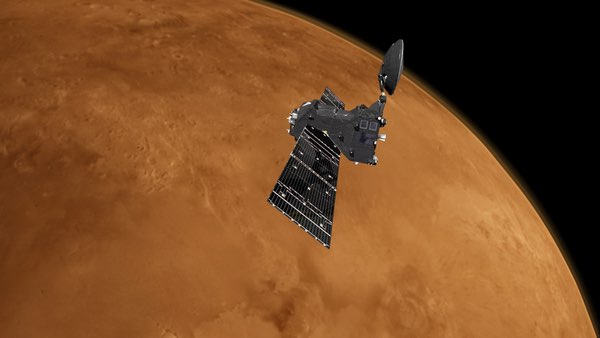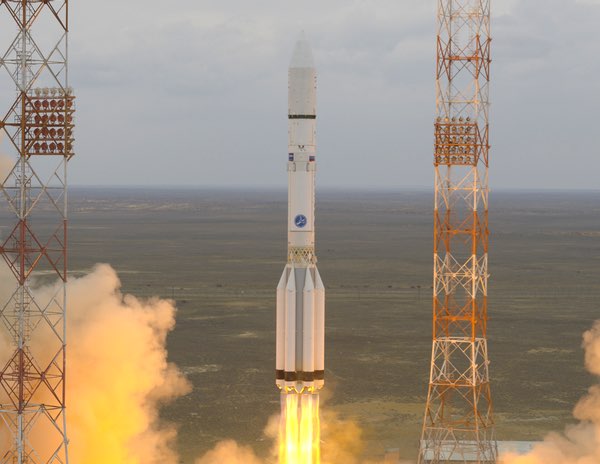ExoMars: a long awaited reboot of the Russian planetary programby Svetoslav Alexandrov
|
| ESA’s decision to work with Russia was met with some criticism. The Soviet Union and later Russia never had a completely successful mission to Mars. |
The project has a long history. Plans and concepts have been revised many times. Back in 2009, NASA and ESA joined hands to launch two missions as part of the project in 2016 and 2018. But in 2012 NASA terminated its participation in ExoMars, which forced ESA to seek the help of Russia. Finally, in March 2013, ESA and Roscosmos signed a deal where Russia became a full partner.
ESA’s decision to work with Russia was met with some criticism. The Soviet Union and later Russia never had a completely successful mission to Mars, unlike the highly successful Soviet space program to Venus. USSR flew some missions to the Red Planet in 1970s, of which Mars 2 and Mars 3 orbiters went around the Red Planet, but their landers failed: Mars 2 entered a steep trajectory and crashed, Mars 3 went silent just seconds after a seemingly successful landing. Then Mars 4, an intended orbiter, missed the planet entirely. Mars 5 entered orbit but worked for just a few weeks. Mars 6 and Mars 7 were landers, but Mars 7 failed to enter the atmosphere while Mars 6 returned only some limited atmospheric data.
Back in late 1980s, well into the periods of glasnost and perestroika, the USSR flew Phobos 2 into orbit around Mars. Some photos of the planet and Phobos were returned before the spacecraft failed due to electronic problems onboard. After the fall of the Soviet Union, Russian interplanetary program experienced only launch failures: first in 1996, when the Blok-D upper stage of the Proton failed to put “Mars 96” on its planned trajectory, then again in 2011 the very ambitious sample return mission Fobos-Grunt failed to enter a path to the Red Planet (see “Red Planet blues”, The Space Review, November 28, 2011).
The failure of Fobos-Grunt was especially embarrassing. For years before launch the project was touted as a grand adventure, and the subsequent failure surely was felt as humiliating among enthusiastic Russians. When the failure report was officially released, it was even more embarrassing to learn that the spacecraft was equipped with non-space-qualified electronic components that may have led to the failure due to radiation damage.
The horrible statistics only fueled concerns that Russia won’t be able to do its main job of the mission, which is launching it. For both ExoMars missions, Proton rockets with Briz-M upper stages were chosen. But the Proton-M rocket is highly problematic and Russia experiences on average at least one Proton failure every year. In 2010 fuel, overloading caused the Proton-M-Block-DM3 with navigation satellites to crash. In 2011, the very expensive Russian communications satellite Express-AM4 was placed into a wrong orbit due to a malfunction of the Briz-M upper stage. In 2012, a Briz-M stage once again failed during the launch of Telkom 3 and Express MD2 satellites. The most embarrassing failure in the history of Proton happened in 2013, when the Proton-M rocket veered off course and crashed next to the launch pad because of wrongly installed angular velocity sensors. In 2014 and 2015, there were two failures because of a third stage defect.
| For Russian scientists, this is a long awaited return to the field of planetary science. |
Russian space experts claim, however, that it’s not that the Proton rockets are bad per se. There is a long-term crisis in the Russian space program with many factors contributing to the failures, including work personnel who are not sufficiently qualified and low salaries. Many people have left the sector and those who remain don’t feel inspired, not only because of the insufficient funding but also because of the lack of innovation and cutting-edge projects.
Luckily, months after the latest failure in 2015, the Proton rocket returned to flight with several important milestones subsequently met. At long last, Russians flew successfully the newly developed upper stage Blok-DM03 which put the Express AM8 satellite in orbit. Before the launch of ExoMars, the Proton-M with the Briz-M stage flew some important commercial payloads. The launch of ExoMars was also very successful: the Proton-M rocket and the Briz-M upper stage very accurately placed the spacecraft on its way to the Red Planet.
 An illustration of the ExoMars Trace Gas Orbiter at Mars. (credit: ESA) |
And so we have a mission. The big question remains: what does it mean for Russia?
For the Russian space industry as a whole, it gives confidence that the country is still able to launch large payloads into interplanetary space. Indeed, this ExoMars mission represents the heaviest cargo ever launched to Mars!
For Russian scientists, this is a long awaited return to the field of planetary science. Not only they will have complete access to the whole dataset received by ExoMars, they are also flying the Atmospheric Chemistry Suite, based on the payload on unsuccessful Fobos-Grunt and Mars 96 missions. Another Russian instrument, a neutron detector FREND, is also currently flying. Part of FREND is a small Bulgarian dosimeter, Liulin-MO, for measuring space radiation. It also built on previous flight heritage, namely, the instrument Liulin-Phobos on Fobos-Grunt. This is really a great chance for scientists to repeat the science that was planned for previous unsuccessful missions. Those instruments are accompanying the European payload on ExoMars, including the Belgian NOMAD spectrometer suite and the CaSSIS camera developed by Switzerland.
| There is some doubt that the second part of ExoMars will be carried on time, or that it will even fly. Regardless, the cooperation between Europe and Russia is very important. |
Unfortunately, some Russian enthusiasts are not very excited about ExoMars. From what I’ve read on Russian social networks and forums, those space fans argue that ExoMars just doesn’t feel like “their” mission. This is not surprising, because the main role for the Russian space program after the fall of the Soviet Union was limited to launching foreign payloads. The unmanned scientific program was almost gone for a long time. There are many Russian enthusiasts who want to have “their spacecraft” and “their rovers” on Mars. They perceive the recently launched spacecraft not as a joint Russian-European mission, but as a European mission with a few Russian instruments onboard.
However, some of these enthusiasts are much more excited about the second part of the project, with a mission that is scheduled to launch in 2018 or 2020. This mission will have more significant Russian presence onboard: the landing platform that is designed to place the ExoMars rover on the Martian surface will be built in Russia and it will also be equipped with Russian instruments.
There is some doubt that the second part of ExoMars will be carried on time, or that it will even fly. Regardless, the cooperation between Europe and Russia is very important, especially in the light of the collapse of the Russian ruble and budget cuts to the ever-shrinking Russian space program. If the current financial crisis continues, such cooperation will be critical if Russian scientists want to achieve other space goals, like a return to the lunar surface or building a new space station after the International Space Station is retired.
